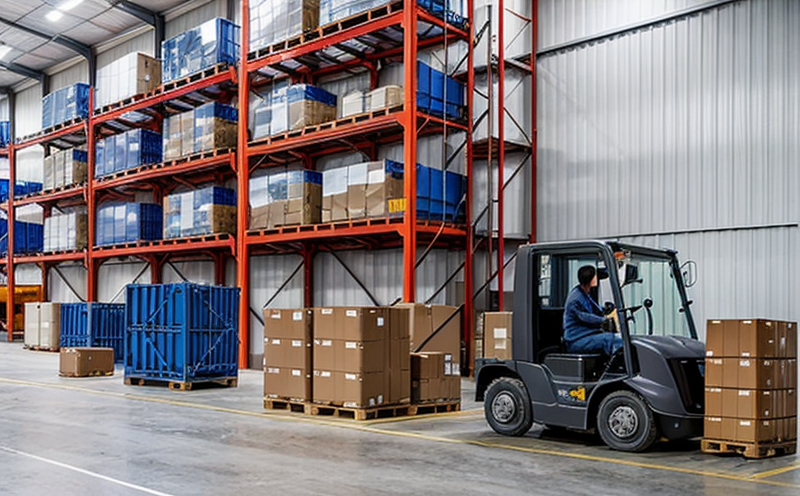EASA CS-P Propeller Compliance Testing
The European Union Aviation Safety Agency (EASA) is responsible for the safety and environmental protection of civil aviation within Europe. One of its key roles includes ensuring that all components used in aircraft are compliant with stringent standards and regulations, particularly those related to propellers under EASA CS-P.
EASA CS-P specifies the requirements for the design, manufacture, installation, operation, maintenance, modification, and continued airworthiness of propeller systems. This certification is essential as it ensures that all components contribute to the overall safety and reliability of the aircraft. Propeller compliance testing under EASA CS-P encompasses a series of rigorous tests aimed at verifying the structural integrity, performance characteristics, and durability of propellers.
The testing process involves several stages that are critical for ensuring compliance with the specified standards. These include:
- Initial design analysis
- Type test
- Production approval test (PAT)
- Continual airworthiness assessment
- Operational use monitoring and reporting
The initial design analysis ensures that the propeller is designed to meet all specified requirements. This stage involves detailed engineering calculations and finite element analyses (FEA) to predict how the propeller will perform under various operating conditions.
The type test focuses on validating the performance of a prototype propeller through a series of laboratory tests. These tests typically include:
- Static strength testing
- Vibration analysis
- Aerodynamic efficiency measurement
- Dynamic balance assessment
The production approval test (PAT) is conducted on a representative sample produced in the same manner as those that will be delivered to customers. The purpose of this test is to ensure consistency and reliability across all units manufactured.
Once the propeller has been approved, it must undergo continual airworthiness assessment during its operational life. This involves monitoring the usage environment, conducting inspections, and performing periodic tests to maintain compliance with EASA CS-P requirements.
The final stage of the testing process is the operational use monitoring and reporting. During this phase, operators are required to report any issues encountered while using the propeller. This information helps in identifying potential weaknesses or areas for improvement.
Scope and Methodology
| Test Parameters | Description |
|---|---|
| Static Strength Testing | Determines the maximum load a propeller can withstand without failure. This test assesses the structural integrity of the propeller under static conditions. |
| Vibration Analysis | Identifies potential resonant frequencies that could lead to fatigue failures over time. Vibration analysis helps ensure the propeller operates safely within its design limits. |
| Aerodynamic Efficiency Measurement | Evaluates how efficiently the propeller converts rotational energy into thrust or lift. Higher efficiency translates directly to better fuel economy and reduced emissions. |
| Dynamic Balance Assessment | Ensures that all parts of the propeller are aligned properly, reducing vibrations during operation which can lead to premature wear and tear. |
| Acceptance Criteria | Description |
|---|---|
| Static Load Capacity | The propeller must maintain structural integrity under loads 1.5 times greater than the maximum expected operational load. |
| Vibration Levels | No resonant frequencies should be present within a specific range to prevent fatigue failure. |
| Aerodynamic Efficiency | The propeller must achieve at least 90% of the theoretical maximum efficiency. |
| Dynamic Balance Tolerance | The imbalance in mass distribution should not exceed ±1 gram per meter. |
The methodology for EASA CS-P Propeller Compliance Testing is based on international standards such as ISO 2534, ASTM F2869, and EN 922-1. These standards provide a framework that ensures the testing process is consistent and repeatable.
Benefits
EASA CS-P Propeller Compliance Testing offers numerous benefits to manufacturers and operators of aircraft propellers:
- Enhanced Safety: By ensuring compliance with EASA regulations, the testing process helps prevent accidents caused by non-compliant components.
- Regulatory Compliance: Meeting these standards guarantees that your product meets all legal requirements in Europe and beyond.
- Improved Reputation: Demonstrating adherence to high-quality standards can significantly enhance your company's reputation among customers and partners.
- Cost Savings: Early detection of issues during the testing phase reduces the risk of costly modifications later on.
- Competitive Advantage: Compliance with EASA CS-P demonstrates a commitment to excellence, giving you an edge in competitive markets.
In addition to these tangible benefits, compliance also fosters trust among stakeholders and contributes positively towards sustainable aviation practices.
Quality and Reliability Assurance
The quality assurance process for EASA CS-P Propeller Compliance Testing is rigorous and involves multiple layers of verification. Each stage of the testing process is documented meticulously, ensuring that every aspect of compliance can be traced back to its origins.
We employ state-of-the-art facilities equipped with advanced instrumentation capable of performing precise measurements. Our team consists of highly skilled engineers who have extensive experience in aviation safety and compliance. They work closely with clients throughout the entire testing process, providing expert advice and support whenever necessary.
Our quality assurance system is ISO 9001 certified, ensuring that all processes are documented, reviewed regularly, and continuously improved upon. This commitment to excellence ensures that every propeller tested meets not only current but also future regulatory requirements.
Data collected from each test run is analyzed thoroughly before being compiled into comprehensive reports. These reports serve as evidence of compliance with EASA CS-P standards and provide valuable insights for further improvements in design and manufacturing processes.





